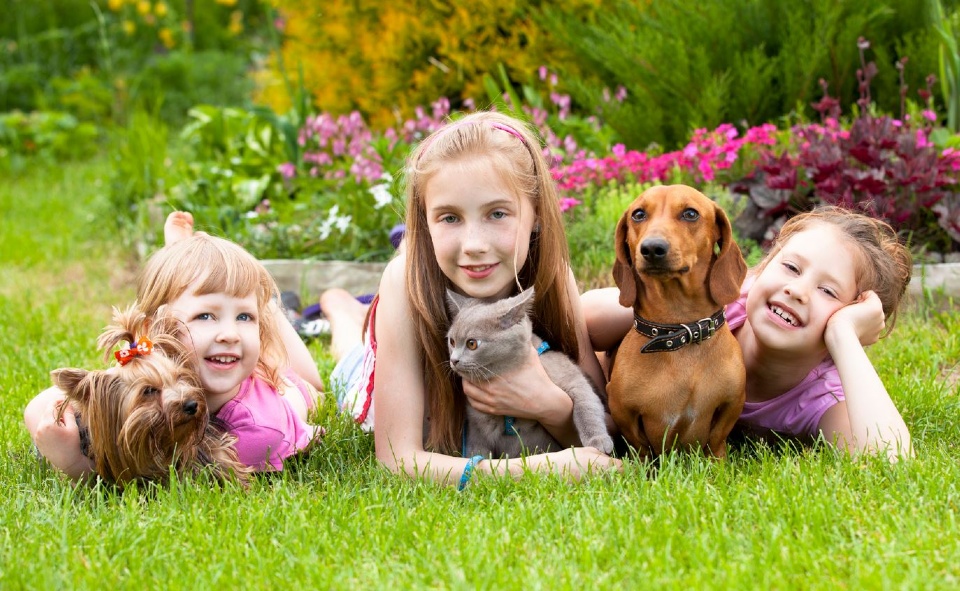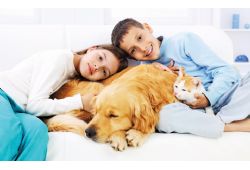The bond
between a pet and a child is very special, but beyond its many benefits, it’s
crucial to create a safe environment.
Studies have shown that children with one or many pets
have greater self-esteem, better social skills and are more popular amongst
other children. It has even been shown that contact with animals reduces the
risk of allergies in children.
Nevertheless, even if the interaction between them
offers many benefits to the child, you must teach him how to behave with
animals (especially dogs) so that both of them can have a safe and enjoyable
relationship. Every year, too many preventable accidents involving children,
pets, and misinformed parents occur.
General rules
Since the child is looking for a pet to play with,
cats and dogs are the animals of choice. Obviously, not all cats and dogs are
great with babies. The animal must be gentle and not demonstrate any kind of
aggressive behaviour.
- Never allow your baby to hurt an animal; it is neither cute nor excusable. Just because he is too young to understand does not mean it’s okay. Teach your child respect.
- Never leave the animal in the baby’s room without supervision.
- Teach your child how to pet the animal and how to handle it. After repeating this a few times, your child will understand.
- Babies learn behaviors from their parents even when it comes to animals. If you act harshly towards the animal, so will your child. If you fear certain animals, there is a great chance that you will pass your fear on to your child.
- Before buying or adopting a pet, visit friends that have animals at home to check if your child develops an allergic reaction. It would truly be sad to realize that your child is allergic once the animal has already become a part of the family.
- Dogs can increase asthmatic kids’ reactions to air pollution. This situation does not occur with cats.
- Children don’t have a sense of responsibility; therefore, don’t expect your child to care for the animal. You will have to look after the animal’s well being at least until your child is old enough to become your little helper.
If you own a dog, it is your responsibility to train it and to teach it how to socialize with other animals. Supervise closely its interactions with children. It will then become a positive experience for both the dog and the child.
Teach your child how;
- The dog communicates.
- To approach a dog and when to do it.
- To behave around a dog.
- To react in front of a menacing dog.
- Children under the age of 10 are the most susceptible to getting bitten.
- A trained dog behaves better around children. Invest in your child’s safety.
- The first contact with a dog is crucial in determining future events. Let your dog smell and even lick your child, even if you have to wash him afterwards. This will allow the dog to recognize your baby and accept him as a member of the family.
- Until you are 100<>percentage<> certain of the dog’s reaction, never leave your baby alone with the dog unless supervised.
- Remember that there are no dog breeds that are completely safe for children. Each dog has its own personality and can react badly to the baby’s arrival.
- Teach your child the signs that indicate when the animal wants to be left alone. It will reduce the risk of accidents.
- Tease a dog.
- Approach a dog that is alone, caged or tied up.
- Approach a dog that is eating or sleeping.
- Touch a dog’s toys or bone.
- Run or yell when a dog comes close.
- Look a dog in the eyes (it’s a threat to them).
- Get in your dog’s face.
- Run towards a dog.
- Touch a dog that is trying to run away or hide.
- Escape by running away.
- Touch a dog that is growling, backing up or showing its teeth.
- Ask permission to touch a dog.
- Let the dog smell your hands (palms facing up) before touching the animal.
- Touch the animal under its chin first, and then the abdomen and the flanks.
- Stay still and remain quiet if an unknown dog approaches you.
- Roll into a fetus position, cover your neck and hide your face under your arms if a dog hustles you and makes you fall.
Ideally, a cat should have been raised in a lively environment and been held by children before it is 3 months old. Otherwise, the cat could become fearful of children or develop aggressive behavior towards them. Cats lose a lot of hair so it’s important to pick it up daily even if no one is allergic. If not, your baby could put it in his mouth. The cat could also be attracted to your child’s spit-up… milk, even when sour!
Never
- Yell in a cat’s ear.
- Pull its tail.
- Let it fall or suffocate it with kisses.
To read more articles from Motherforlife website, please visit Motherforlife.com

 In The Latest Issue:
In The Latest Issue:




 BY:
BY: 

Tweet
Share